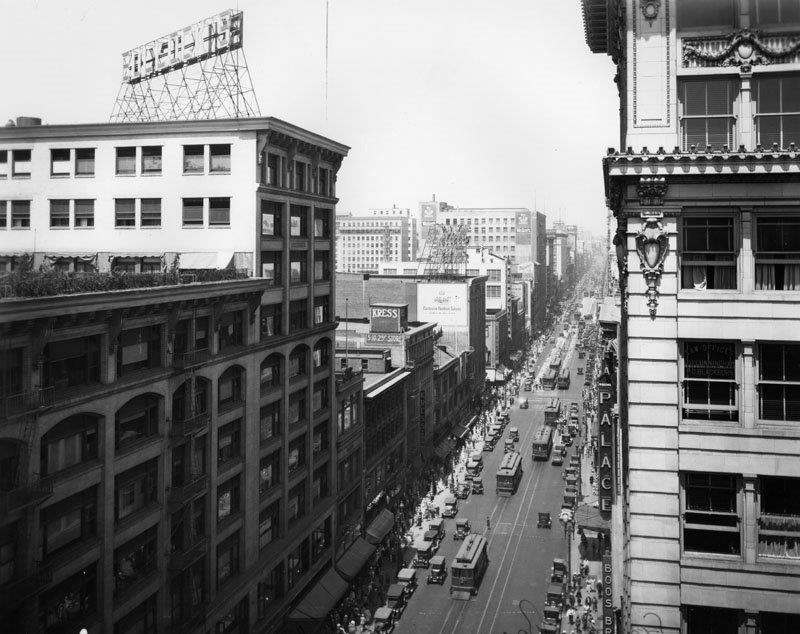LARY in Downtown LA. : Always a car in sight!
By Ralph Cantos
It may have been Los Angeles Transit Lines that coined the phrase “always a car in sight” when referring to the world-famous P Line with its 90-second post-World War II headways.
But all anyone needs do is look at historic photos of Downtown Los Angeles from about 1920 to early 1946, and it would be obvious that the phrase applied to just about the entire rail system.
This postcard is typical of any photo taken in 1928, at or near Broadway & 7th in the CBD. The LARY car lines blanked the entire inner city.
About the only major rail abandonment to take place during that 26 year period, was the L Line along West 10th Street/Olympic Boulevard. It was not low patronage the killed off the L Line, but rather construction and widening of West 10th Street being reconfigured into Olympic Boulevard.
Broadway at 7th was by far the center of all LARY rail service. Its very difficult to determine just how many car lines operated down Broadway at its peak. The LARY was in a constant state of change in re-routing and changing terminals of its car lines with the ease so commonly seen today in “flexible” modern day bus lines.
The PE did operate car lines within the CBD, along Hill Street, Main and 6th Streets, but not with the profuseness of the LARY.
The accompanying photos illustrate just how fantastic rail transit was in LA during those 26 years.
When LATL took over the LARY, things began to change, and not for the better. The once-vast rail system was “butchered” by the “we don’t give a damn” National City Lines management. LA city and Public Utilities Commission officials just sat by with their fingers up their ass and let the whole rail system go to hell.
Ralph Cantos Collection









Anyone know the name of the track layout at 7th and broadway? As I recall it had the normal two tracks crossing at 90 degrees and it had turns off each track to the the cross street. Royal Diamond? When I was a kid I used to stand there waiting to see if any of the cars would make a turn, but they never did. I loved the sound they made as they clattered through the intersection. At rush hours there was a street conductor in all four of the safety islands and they would open the exit door to let passengers off and then collect fares or transfers from the incoming passengers.